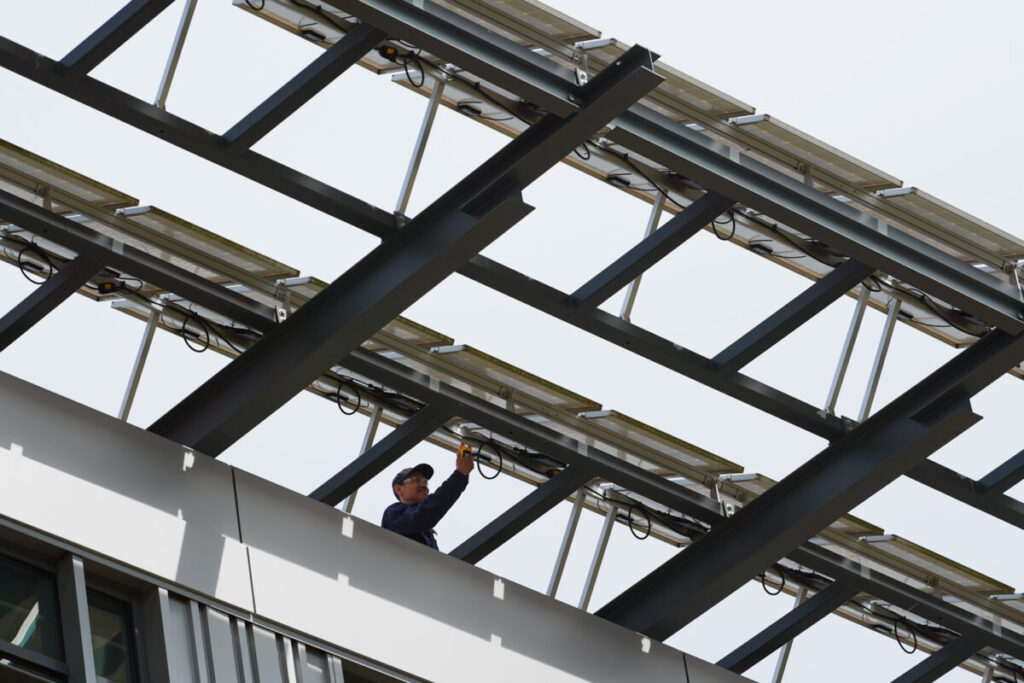Will White, Solar Application Specialist at Fluke Corporation, focuses on the important qualities of contemporary assembly and rack systems in solar installations.
The Solar Market of the United States remains its rapid expansion, with 2024 that marks a year of considerable growth. Almost 50 GW The solar capacity was installed – an increase of 21% compared to the previous year. This upward process is expected to continue until 2025 and then, whereby the Solar Energy Industries Association (SEIA) is predicted that the nation will reach 500 GW of installed solar capacity by 2035.
This growth is partially powered by increasing the demand for energy from data centers To support artificial intelligence and widespread electrification. As the demand rises, the quality and efficiency of solar installations become more critical than ever -not only for maximizing the energy output, but also for guaranteeing the safety of the installer, the prevention of module damage and the extension of the lifetime of the system.
With the accelerating of solar adoption, the assembly and racking technologies had to quickly evolve to keep pace. Nowadays, a wide range of assembly solutions, including land mount, roof, wall-mounted, floating and carport systems are available for various project needs.
Assembly and racking systems are good About 10% of the total costs of a solar installation. For example, in a $ 10,000 solar system, around $ 1,000 goes to the stretch.
In the core, assembly and stretch systems to protect solar modules in place, so that they are placed on the optimum tilt and orientation for maximum energy production. These adjustments are influenced by factors such as latitude, seasonal variations and time of the day. Although mounting systems missed traditional flexibility and were cumbersome and time -consuming to install, some innovations transform the landscape.
Manufacturers innovate continuously to develop lighter, more sustainable and easier to install mounting solutions. Modern mounting structures are mainly made of soft steel or aluminum and offer strong support while the weight minimizes. Newer systems reduce the installation time and complexity, which require fewer steps and eliminate the need for installers to step on modules or to use extra equipment such as ladders. Some mounting systems now have adjustable corners ranging from 5 degrees to 60 degrees, allowing them to optimize the exposure to solar energy for several seasons, increasing efficiency and economic returns.
In addition to improved mounting systems, new tools improve installation efficiency. Module lifts, for example, ensure the safe and fast transport from solar modules to roofs, reducing the need for heavy lifting and the risk for both installers and modules is minimized. Such tools streamline the installation process, making it safer, faster and more precisely. As a result, installers spend less time on the spot, reduce labor costs and improve the total project efficiency.
In accordance with new systems and tools, Solar is expanding to new sites, which requires specialized mounting solutions. Floating solar systemsinstalled on water bodies, require floating platforms and corrosion-resistant materials to withstand UV exposure, wind and water pressure and at the same time offer a low-maintenance and high durability. In comparison with a traditional soil confirmation, the mounting system for this application is often much lighter.
In agricultural applications, or agrivoltaicIncreased mounting structures make use of double land possible, which makes agriculture and solar generation on the same country possible without endangering. The higher the supports of the ground are, the easier it is to work under and around the arrays.
Likewise, carport Assembly solutions are becoming increasingly popular, especially for commercial and industrial parking spaces. These structures not only generate solar energy, but also offer shade and weather protection for vehicles, so that the efficiency of land use is maximized and at the same time reduces energy costs.
With solar projects increasingly used in regions that are sensitive to high wind, heavy snowfall and seismic activity, modern mounting systems are designed to meet strict sustainability standards. Each part of a solar panel must meet certification and approval processes to guarantee structural integrity and lifespan. Selecting the right solutions for the mounting and racking is essential to keep arrays in place during extreme weather conditions, preventing valuable damage and ensuring reliable long-term effect.
While the solar industry continues its rapid evolution, installers, developers and manufacturers must join best practices and emerging technologies to stay ahead. Ensuring that mounting systems are adjustable is crucial for optimizing energy production and streamlining the installation. Investing in tools for installing these systems can improve safety and reduce working time, which can further improve project efficiency.
In addition, compliance with evolving structural and environmental regulations is needed to maintain the reliability and resilience of solar installations.
As the demand for solar energy grows, the role of advanced assembly and rack systems will be crucial to ensure that installations are safe, efficient and built to last long.
Will White is a specialist on solar application to the manufacturer of multinational electrical tools Bug Corporation, where he leads training programs for staff, including BugThe NabCEP approved courses and tool design and development to support and accelerate the growth of the solar staff file for the future of the Solar Energy. Will also serves as a contract instructor at Solar Energy International, where he gives lessons online, personal and hands-on lessons in solar and energy storage.
The views and opinions expressed in this article are the author, and do not necessarily reflect it by PV -Magazine.
This content is protected by copyright and may not be reused. If you want to work with us and reuse part of our content, please contact: editors@pv-magazine.com.
Popular content


